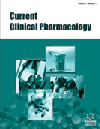-
oa Editorial [Hot Topic: Kidney Cancer: State of the Art in 2011 (Guest Editor: Ulka Vaishampayan)]
- Source: Current Clinical Pharmacology, Volume 6, Issue 3, Aug 2011, p. 143 - 143
-
- 01 Aug 2011
- Previous Article
- Table of Contents
- Next Article
Abstract
Renal Cancer: Is Targeted Therapy Really Empiric? It is a routine clinic day for me. I am being pulled in ten different directions between unstable patients, infusion reactions and phone calls and messages needing attention. Amidst this chaos I walk into the room to meet my new consult. He is a very young 20+ year old man sitting with quiet resignation to his fate. However what is most striking is that his mother is looking at me with beseeching eyes. Those eyes are fiercely challenging me, and simultaneously begging me, to help her precious son and make this black shadow on his existence, a thing of the past. This patient has kidney cancer with roaring metastases in the bones, lungs and lymph nodes. This case serves as a repeated reminder to me that nothing about kidney cancer is routine and all the recent advances that we are all applauding, are just not enough. The biggest failures of targeted therapy have been no clearly identified target to attack, and individualize therapy, and a lack of complete remissions. Novel therapeutic development unfortunately continues along the same path with more vascular pathway inhibitors being evaluated in clinical trials. So the field has only moved laterally despite the FDA approval and subsequent clinical availability of six agents in the last six years. Research efforts exploring the scientific methodology for detecting targets, and identifying and selecting the patients for specific therapies have been fewer. There are some commendable steps being taken in that direction with HLA subtype based immunotherapy and antibody based therapies. But tumor tissue screening for predicting response or resistance to specific targeted therapies needs to be one of the priorities for future investigations in kidney cancer. In addition, within kidney cancer, non clear cell histologies to this date have no proven standard therapy and are still orphan indications. Most clinical investigations are limited to small single arm prospective trials or case series reports. This is also gradually changing and some concerted efforts to conduct larger studies in this patient population are ongoing. Meanwhile the incidence of this lethal disease of kidney cancer continues to increase and we face more and more young patients afflicted with it. Renal cancer is a flagship for multidisciplinary care and input. The incorporation of surgery or non invasive image guided local therapies is likely to contribute a new dimension to the care of this disease, especially when systemic response has been obtained. With appropriate targeted systemic therapies and the use of local therapies as adjuncts, it maybe possible to work towards the lofty goal of rendering every metastatic kidney cancer patient in remission. I assure you that the patients are with us in this fight, and we have their support to generate better clinical trials that they would enroll on. The rapid advances made in the last decade, with the enrollment of thousands of patients to clinical trials, are testament to the fact that patients are eager to join the fray and do their part. The kidney cancer patients rarely get the credit they deserve for being on the front line giving their life and extremely valuable time (which they have precious little of) for the strife against this deadly disease. They are the unsung heroes and I would like to dedicate this issue on “Current State of Kidney Cancer and Future Targets and Directions” to them and honor them with a salute and solemn promise to continue the struggle.


